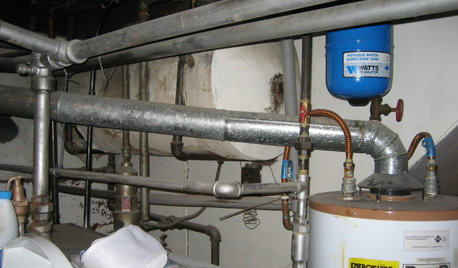Could this be root rot on my rhododendron?
lizzie_nh
12 years ago
Related Stories

GARDENING AND LANDSCAPING8 Rot-Resistant Woods for Your Outdoor Projects
No need for chemical treatments on your deck or pergola. These woods stand up to weather, insects and time beautifully on their own
Full Story
ARCHITECTURERoots of Style: Do You Live in a Minimalist Traditional House?
Cottages, bungalows, farmhouses ... whatever you call them, houses in this style share several characteristics. See how many your house has
Full Story
ARCHITECTURERoots of Style: Queen Anne Homes Present Regal Details
Complex facades with bay windows, multiple shingle patterns and even towers make these Victorian-era homes a sight to behold
Full Story
ARCHITECTURERoots of Style: The Eclectic American Foursquare
The turn-of-the-20th-century style transitioned U.S. residential architecture from the Victorian era to the modern age
Full Story
HOUZZ TOURSMy Houzz: Highlighting Farmhouse Roots in a Seattle Suburb
New and old mix with DIY touches in a remodeled 1928 home for a family of 6
Full Story
GARDENING GUIDESHave Acidic Soil in Your Yard? Learn to Love Gardening Anyway
Look to acid-loving plants, like conifers and rhododendrons, to help your low-pH garden thrive
Full Story
FEEL-GOOD HOME21 Ways to Waste Less at Home
Whether it's herbs rotting in the fridge or clothes that never get worn, most of us waste too much. Here are ways to make a change
Full Story
REMODELING GUIDES7 Bad Things Your Home May Be Hiding
What you don't know about your home could cost you during a remodel. Here's what to plan for
Full Story
BATHROOM DESIGN7 Metal Tubs That Steal the Show
Industrial-style metal tubs offer lightweight, unique alternatives to porcelain. Could a metal tub be for you?
Full Story
LIFETrue Confessions of a House Stalker
Letting go when a new owner dares to change a beloved house's look can be downright difficult. Has this ever happened to you?
Full Story







mad_gallica (z5 Eastern NY)
lizzie_nhOriginal Author
Related Professionals
Mitchellville Landscape Architects & Landscape Designers · Palm Springs Landscape Architects & Landscape Designers · Washington Landscape Architects & Landscape Designers · Braintree Landscape Contractors · Eureka Landscape Contractors · Eustis Landscape Contractors · Fort Myers Landscape Contractors · Haverhill Landscape Contractors · Lees Summit Landscape Contractors · Middletown Landscape Contractors · Rockwall Landscape Contractors · Ronkonkoma Landscape Contractors · The Villages Landscape Contractors · Welby Landscape Contractors · Four Corners Landscape Contractorslizzie_nhOriginal Author
wieslaw59
morz8 - Washington Coast
ken_adrian Adrian MI cold Z5
lizzie_nhOriginal Author
ken_adrian Adrian MI cold Z5
wieslaw59
lizzie_nhOriginal Author
NHBabs z4b-5a NH